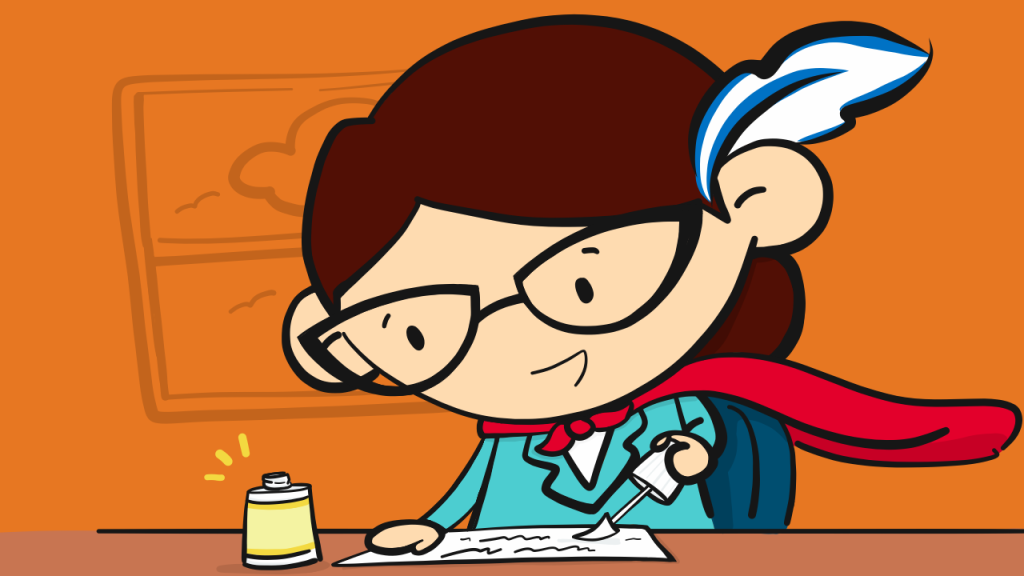Just like paper clips and staplers, correction fluid and correction tape have become office necessities. That’s a good thing because when we want to cover up a printed mistake, we often turn to correction supplies to help us out.
Here are some tips on when and how to use these popular error-masking items to extend their value.
-
Know the difference between correction tape and correction fluid
Correction fluid is made of liquid elastic polymers, color pigments, solvents, and other materials. The liquid is stored in a bottle or pen-dispenser. The bottled correction fluid has a brush or foam applicator attached to the inside of the cap. It goes on wet, and then dries in a few minutes. The fluid sticks to paper when it’s applied. The most common color is white; however, other varieties of correction fluid with different color pigments that come in a bottle are available, such as buff.
Wait a few minutes before writing over the area where you applied correction fluid because it must be completely dry. If it’s still wet, it might smear and ruin your writing utensil and document when you try to write over it.
Correction tape is housed in a plastic dispenser. The tape is a film material with one side clear. The other side has a white coating material. The tape is odorless and dry when applied.
Since the correction tape is dry when you apply it to a document, you can immediately write over it.
-
Don’t run documents with correction tape or fluid through a printer
You can print over correction tape and correction fluid; however, it’s not advisable to run documents with correction material through your printer. It may transfer to the printer’s rollers and soil the parts inside of the machine. The same applies to copy machines. Always use fresh, clean paper in your printers and copy machines.
-
Be aware of how to copy, scan or fax over correction tape and correction fluid
Copy, scan and fax documents with correction fluid by laying them flat on the glass of the machine. Before and after each use, wipe down the glass with a clean lint-free cloth dampened with water or glass cleaner and remove any correction material residue. Use another lint-free cloth to dry the glass. If you skip cleaning it, your scanned or faxed document may appear with vertical lines due to the transferred correction fluid.
-
Be aware of the longevity of correction fluid, and the reasons to use it
Correction fluid has an 18-month- to 2-year shelf life, however, if the cap is not fully closed or left off the bottle, the fluid inside will dry up fast, in as little as 24 to 48 hours. Every second counts when the cap is off the bottle and the product is exposed to air. Know where your bloopers are that you want to cover up before you open the bottle, and then work fast.
When you just have a small misstep to correct and you’re in a crush for time, correction fluid is the perfect choice. Use it to mask larger areas on a printed draft document when you’re collaborating and marking up changes too.
Skip time reprinting by using correction fluid to hide errors from pen ink, highlighters, pencils, and more. Use extra coverage correction fluid to cover up red ink and permanent marker mistakes.
-
Know when you cannot use correction fluid or correction tape
Some documents are sensitive. These include passport applications and other legal documents that require signatures, like checks. Because it could be perceived as tampering in those cases, correction fluid or correction tape typically can’t be used to correct errors. When in doubt, seek the advice of a professional in the legal industry.
-
Be aware of other uses for correction fluid beyond the office
Keep a few bottles of correction fluid at home, as it could come in handy. Use it to cover up scuff marks on white shoes or mask dings on appliances. Correction tape or fluid also works fine for covering up last-minute paper calendar changes.
-
Know the best way to use bottled correction fluid
Shake the bottle a few times to mix up the ingredients. Lift the applicator out of the bottle, and then gently tap any excess fluid on the inside edge so that it drips back inside the bottle. If you notice lumps, brush them off on a piece of blank paper, then reinsert the applicator in the bottle. Discard and open a new bottle if you see lumpy fluid frequently. Apply the fluid smoothly and evenly in thin layers on the area you want to cover. Wait a few minutes between applications to allow the material to dry completely. This technique also helps maintain the integrity of the paper to which you’re applying the correction fluid.
-
Camouflage errors with correction fluid in a pen dispenser
With correction pens, you manage the allocation of the correction material by shaking the barrel of the pen and then squeezing it. Correction pens are excellent for making tiny corrections as well as for covering wide areas. To apply, hold the pen and squeeze the barrel firmly. Dot a small area to cover a tiny spot-sized mistake. Squeeze the barrel of the pen longer to release more correction fluid to cover a wider area. Use the tip of the pen to spread the fluid.
-
Know the best way to use correction tape
You can use correction tape in many different ways however, due to its block formation, it’s best suited for making corrections in a straight line such as over line-by-line text. To apply, align the flat nose of the dispenser directly over the line of text you want to cover. Press the dispenser down, and slide it to the right. Lift it up when finished. Correction tape is easy to use. Matter of fact, some products feature easy-to-hold rubber grips designed for both left-handed and right-handed people.



